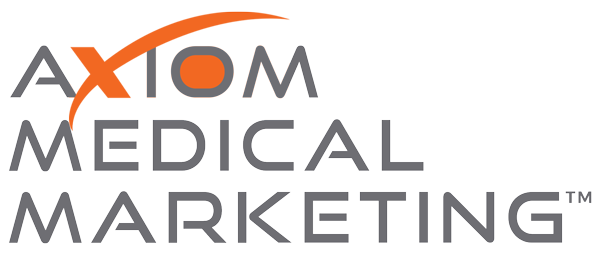What Does 100 Facebook Likes Mean to Your Business?
Your business can reach new clientele every day if you market your social media accounts properly – especially Facebook. You may even be interacting with people that didn’t directly “Like” your page. How? Read more about the impact social media has on business owners in our upcoming articles.
Our August Newsletter is Here!
 Check it out HERE! Learn about bedside manner, minimally invasive surgery, and our client services!
Check it out HERE! Learn about bedside manner, minimally invasive surgery, and our client services!
Any Pest Control Companies Out There in Need of Marketing Help?
If you are a Pest Control company, and you need an online presence, consider consulting with Axiom Internet Marketing. Using the social media, and proper search engine optimization techniques, we can bring your business growth and success. Read this ARTICLE we wrote for Universal Pest Control
Enhance your Practice and the Lives of your Patients: Proper Bedside Manner
Some medical professionals believe that their ranking and status are enough to pull in more patients and maintain retention rate. However, proper bedside manner embraces medical knowledge and the ability to understand patients’ health concerns. The more a healthcare provider knows each individual, the more efficient they may be at diagnosing the patient without complications. This will give the patient faith and confidence that they made the right decision to walk into your office, because it will reflect what they saw in your professional capabilities via research and recommendations. If a patient’s first impression is of a knowledgeable and friendly staff, it will reflect upon the practice as a whole, and especially the capabilities of the physicians themselves.
Help Them Heal
It is very important for someone who is very ill to have confidence and the mentality that they can, and will, get better, regardless of the circumstance. An issue on “health etiquette” by South University stated that, “being kind and empathetic goes a long way in gaining a patient’s confidence.” Many people who have been in the hands of caring physicians believe this to be true. Health care providers must understand that one’s dignity is at stake when they are giving a diagnoses or status on the patient’s condition, and it is up to the provider to leave that poise untarnished. When someone loses the will and spirit to survive, they may be giving their illness the advantage. Let’s take a cancer patient, for example; he or she is struggling physically, emotionally, and psychologically. Fatigue, nausea, and a broken spirit usually follows rounds of chemotherapy and visits to the doctor. It takes not only the support of family members and friends to help the patient fight this unrelenting battle, but the support of their professional caretaker.
Keep Them Coming Back
New mothers can be very picky and cautious in choosing a pediatrician for their child. One personal testimony from a mother of a two year old told her story about a nurse practitioner that chased her away to a completely different practice. “She was rude and inconsiderate when it came to my child’s needs. The nurse told me my child was overweight based solely off of what she read on the scale, without considering that my daughter was also above average height. I never went back,” says the concerned mother. According to this parent, the nurse practitioner was uninterested in the real problem, which was that her daughter actually wasn’t eating enough. Despite the parent trying to express her concerns, she was belittled and cut-off repeatedly. This brings us to another factor: health care providers should be aware of the entire staff’s ability to maintain proper etiquette, because physician’s assistants and nurses are usually who the patient encounters first.
It’s Not too Late to Learn Proper Bedside Manner
In 2009, a study published in an issue of Academic Medicine proved that learning is possible, and the effort to enhance compassion towards patients does matter. Groups of reputable physician-teachers from five academic medical facilities attended meetings twice a month. They were taught skills that were meant to improve empathy and compassion, as well as, reflecting upon their personal work via group discussions and personal diary entries. In order to see if there were any subjective developments – over the course of 18 months – medical students and residents evaluated the physician-teachers along with the “control group” that did not partake in the meetings. They were assessed “…on such matters as listening carefully and connecting with others, teaching communication and relationship-building skills, and inspiring the adoption of caring attitudes toward patients.”
“At all five sites, those physician-teachers who participated in the program consistently outscored the controls,” – The New York Times
Physicians live in a fast-paced world that sometimes limits their capability to get to know their patients. However, the rest of the general population lives in that same world, yet they still make the conscious choice to walk into your office. They are not just “customers” – they are people, they are your neighbors, and they want physicians to take their health as seriously as they take their own. Meaningful handshakes, genuine smiles, and proper listening could be the difference between these same people making the conscious choice to walk into your office for the second time.
References:
Britt, Darice. “Healthcare Professionalism: How Important Is Proper Bedside Manner?” Health. South University, Apr. 2013. Web. 21 Aug. 2013. <http://source.southuniversity.edu/healthcare-professionalism-how-important-is-proper-bedside-manner-132067.aspx>.
Chen, Pauline W., M.D. “The Hidden Curriculum of Medical School.” Health. The New York Times, 29 Jan. 2009. Web. 21 Aug. 2013. <http://www.nytimes.com/2009/01/30/health/29chen.html>.
Parker-Pope, Tara. “Can Better Bedside Manner Be Taught?” Health. The New York Times, 29 Jan. 2009. Web. 21 Aug. 2013. <http://well.blogs.nytimes.com/2009/01/29/can-better-bedside-manner-be-taught/?_r=0>.
Can You be Found on Google?
Axiom Internet Marketing: uniquely designed to fit the needs of your business. Find out more by watching our VIDEO
What We Do: Axiom Health Care Marketing
See what sets us apart from other marketing services out there. Check out this VIDEO
Getting Personal with Social Media
If 100 potential clients stumble upon your professional website, your business is 1 step closer to success. However, if 100 potential clients stumble upon your personal Facebook page, you are 100 likes closer to building trustworthy, continuous relationships. There is a difference between a website and a person connecting with others online. That difference starts with making it about them.
Find out more in our upcoming articles on what it means to properly create, and market, social media sites for your business.
Turn "Customers" into "People" Again: Proper Bedside Manner
Physicians live in a fast-paced world that sometimes limits their capability to get to know their patients. However, the rest of the general population lives in that same world, yet they still make the conscious choice to walk into your office. They are not just “customers” – they are people, they are your neighbors, and they want physicians to take their health as seriously as they take their own. Meaningful handshakes, genuine smiles, and proper listening could be the difference between these same people making the conscious choice to walk into your office for the second time.
Effectively Communicate with your Clients – Online
Learn how E-mail Marketing can help grow your business in a cheap and efficient manner. Check it out in this ARTICLE
Facing the Knife: Minimally Invasive Endoscopic Thyroidectomy
Finding out that you are sick is not an easy task to embrace. Sometimes, we think that we are stressed, exhausted, and losing or gaining weight due to pressure from work, family, and even ourselves. Unfortunately, thyroid disease can be the underlying issue causing changes to the physiological functions in your body. The thyroid is a butterfly-shaped endocrine gland located below the larynx and above the collarbone. It secretes hormones that regulate metabolism and temperature as well as interacting with other body systems, keeping you looking and feeling healthy and energized. Disorders such as thyroid cancer, nodules, and hyperthyroidism require a thyroidectomy, which is when part of, or all, of your thyroid is removed.
Many people are apprehensive about going under the knife due to the belief that it can be emotionally and mentally scaring. However, educating yourself on the different surgical options to you can change everything you think you know. A minimally invasive endoscopic thyroidectomy is a revolutionary method to saving lives without the worry and stress that is usually associated with complex procedures.
Benefits of Minimally Invasive Video- Assisted Thyroidectomy
Speedy recovery time, less postoperative pain, and improved cosmetic results due to smaller incisions are the major benefits associated with laparoscopic surgery using an endoscope.
Numerous studies have been conducted comparing conventional thyroidectomies to minimally invasive endoscopic and minimal incision thyroidectomies, yielding safe, powerful results. The Department of General Surgery, Medical School, at the University of Florence, performed one of these conclusive studies, which consisted of 957 patients undergoing different methods of thyroid surgery. 28.2% of those patients were operated on using minimally invasive techniques, and 71.8% were operated on using traditional methods. It was concluded that, “when compared with conventional treatment, [video-assisted and open minimal-incision thyroidectomy] provided significant benefit in terms of cosmetic results and postoperative pain.”
Improved cosmetic results? Women, unfortunately, are at great risk for developing thyroid disease than men (about 7 times more likely, according to experts). One of the major benefits to minimally invasive thyroidectomies is to reduce the appearance of scarring, which is a huge concern for these women, and for most men as well. The primary definition of minimally invasive thyroidectomies is “reduced incision length” (Kearney, James J.)
Surgeons that practice laparoscopic surgery have you in mind. They understand that every patient wants to feel comfortable and confident in their own skin, especially after conquering life’s unrelenting battles.
Do you qualify for minimally invasive surgery?
Consulting your surgeon to know if you are a candidate for minimally invasive or traditional surgery is necessary to know which route to take. Patients have the option to choose a less invasive procedure based off of the condition of the disorder;
- If the condition is thyroid cancer, it must be less than 2 cm in size.
- Thyroid nodules must be less than 3.5 cm in size.
- It is necessary that glands be free of thyroiditis.
- Goiters must be considered to be small.
Common Signs and Risk Factors to Thyroid Disorders
If you believe you may have a thyroid disorder, be proactive before too much growth can occur. You may have more options if you confront your symptoms right away and seek treatment.
- Discomfort/Enlargement of the neck: Self Neck Check
- Change in bowel movements: Constipation (Hypothyroidism) and Diarrhea (Hyperthyroidism)
- Irregular Menstrual Cycle
- Age: Being over 50 years of age increases your chances
- A family history of thyroid problems
- Depression
- Anxiety (panic attacks)
- Unexplained weight changes
- Fatigue
- High cholesterol (Hypothyroidism) and Low cholesterol (Hyperthyroidism)
- Muscle and Join Pain/Weakness
- Brittle and Dry Hair
- Coarse and scaly skin
Only your physician or surgeon can properly diagnose thyroid disorders. After the initial examination doctors may order tests such as a chest X-ray, a CT or MRI scan, blood tests to evaluate thyroid function, aspiration biopsy, an ultrasound, etc. In the meantime, here are some red flags when it comes to disorder of the thyroid, and paying close attention to even subtle changes can bring you one step closer to a healthier you.
Axiom is here to help take care of your online marketing so you can help treat your patients. We believe when letting physicians work in their “specialty” they will be able to deliver the most effective care. We can help you out by not letting you worry about what is happening on your website and social media accounts – that, we hope, will be our job.
So if you are a Surgeon in Florida, California, Texas, Massachusetts, Maryland, New York, Rhode Island, Vermont, Maine, Hawaii, Pennsylvania, New Jersey or New Hampshire and need Healthcare (SEO) Search Engine Optimization, Social Media Management and or need assistance with Video/Media Production we can help you. Visit our Services Page and we may also be reached at (800)-888-6348. Call us for a free consultation. Disclaimer.
References:
Cianchi, F., D. Boni, E. Qirici, C. Cortesini, and G. Perigli. “Clinical Benefits of Minimally Invasive Techniques in Thyroid Surgery.” World Journal of Surgery 32.1 (2008): 45-5. National Center for Biotechnology Information. U.S. National Library of Medicine. Web. 05 Aug. 2013. <http://www.ncbi.nlm.nih.gov/pubmed/17990025>.
Kearney, James J. “Minmally Invasive Thyroid Surgery.” Penn Cancer, n.d. Web. 04 Aug. 2013. <http://www.penncancer.com/pdf/Kearney.pdf>.
Shomon, Mary. “Top 10 Signs That You May Have a Thyroid Problem.” Health: Thyroid Disease. About.com, 2012. Web. 05 Aug. 2013. <http://thyroid.about.com/cs/basics_starthere/a/10signs.htm>.
Sklar, Hallie L. “Could You Have AThyroid Disorder?” Thyroid Disorders. Womenshealthmag.com, 2011. Web. 04 Aug. 2013. <http://www.womenshealthmag.com/health/thyroid-disorders>.
“Thyroid Disorders and Surgery.” American Academy of Otolaryngology – Head and Neck Surgery, 2010. Web. 04 Aug. 2013. <http://www.entnet.org/HealthInformation/Thyroid-Disorders.cfm>.
















